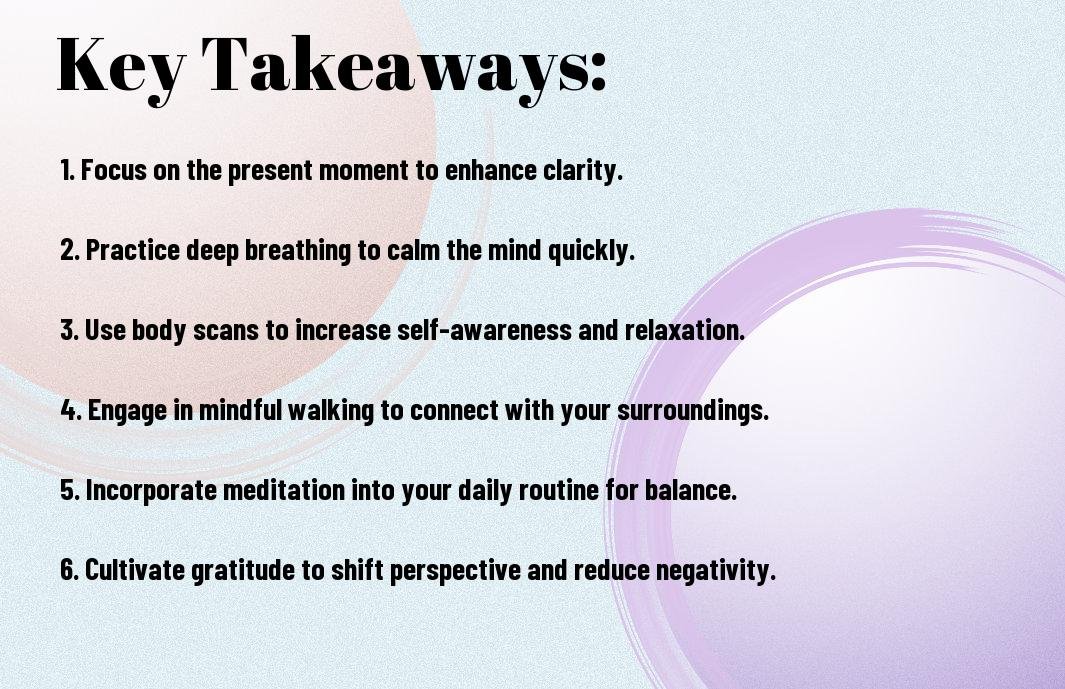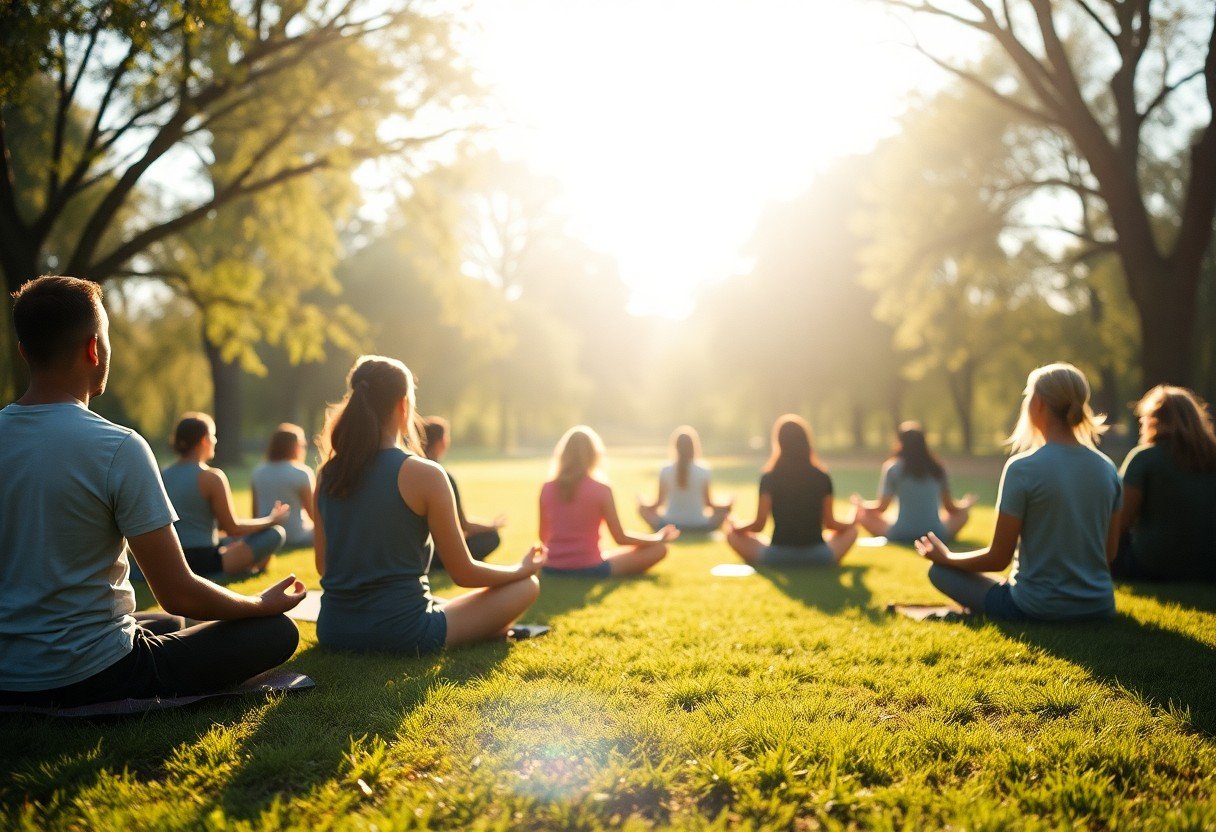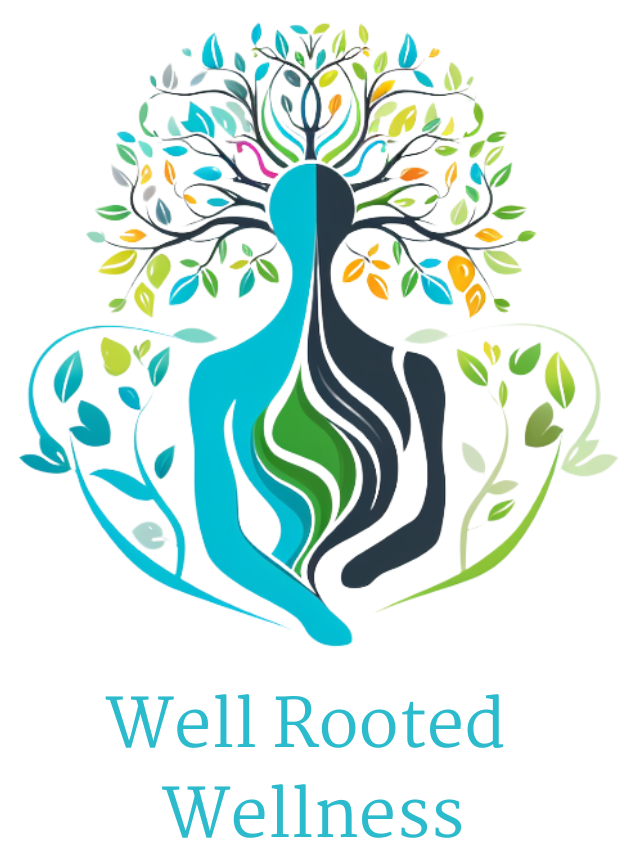Just a few simple mindfulness techniques can transform your approach to stress and anxiety. In today’s fast-paced world, you increasingly need effective methods to center your thoughts and emotions. This post will explore practical strategies that you can easily integrate into your daily routine. By embracing these mindfulness practices, you’ll cultivate a greater sense of peace and resilience, empowering you to navigate life’s challenges with a calm mind and a steady heart.
Understanding Mindfulness
To grasp the essence of mindfulness, it’s vital to realize that it involves being fully present in the moment, paying attention to your thoughts and feelings without judgment. This awareness allows you to cultivate a sense of calm and clarity, enabling you to manage stress and anxiety more effectively in your daily life.
Definition and Principles
Among the key aspects of mindfulness are self-awareness, acceptance, and living in the present. By practicing mindfulness, you learn to observe your internal experiences without criticism or attachment, fostering a healthier relationship with your thoughts and emotions.
The Science Behind Mindfulness
Around the world, researchers have explored how mindfulness practices can significantly impact your mental health by reducing symptoms of anxiety and depression. Studies show that regular mindfulness exercises enhance neuroplasticity, leading to more resilient brain pathways and improved emotional regulation.
Even though mindfulness might seem like a simple concept, the scientific evidence supporting its benefits is extensive. Neuroimaging studies demonstrate that mindfulness practices can change the structure and function of the brain, promoting areas associated with emotional regulation and decreasing reactivity to stress. By dedicating time to mindfulness techniques, you are not just nurturing your mental well-being; you are also encouraging lasting positive changes in your brain’s chemistry that will enhance your quality of life.

Techniques for Mindfulness Practice
While incorporating mindfulness techniques into your daily routine can significantly reduce stress and anxiety, it’s important to find methods that resonate with you. Explore various practices like breathing exercises and body scan meditation to discover which ones suit your lifestyle best. By integrating these techniques, you can cultivate a more present and calm mindset, ultimately enhancing your overall well-being.
Breathing Exercises
To begin your mindfulness journey, try simple breathing exercises that center your mind and body. Focus on inhaling deeply through your nose, allowing your abdomen to expand, and exhaling slowly through your mouth. This rhythmic practice not only calms your nervous system but also helps anchor your awareness in the present moment.
Body Scan Meditation
Breathing is a vital component of body scan meditation, a technique that fosters deep relaxation and awareness. You start by focusing on your breath and gradually shift your attention from the tips of your toes to the crown of your head, noting any sensations or tension in each body part.
Even just a few minutes of body scan meditation can help you reconnect with your physical self and identify areas of stress. As you pay attention to each part of your body, allow yourself to release any built-up tension, encouraging a sense of calm and grounding. This practice not only enhances your awareness but also promotes emotional balance, making it a valuable tool for managing stress and anxiety effectively.

Mindfulness in Daily Life
After incorporating mindfulness into your daily routine, you’ll discover that small moments can bring big changes. By consciously engaging in everyday activities, you can cultivate a sense of presence and reduce stress. Whether you’re washing dishes, commuting, or having a conversation, these simple acts become opportunities to connect with the current moment, helping you manage anxiety and enhance your overall well-being.
Mindful Eating
Behind the act of mindful eating lies a powerful practice that encourages you to engage fully with your meals. By slowing down and savoring each bite, you can truly appreciate the flavors, textures, and aromas of your food. This not only promotes healthier eating habits but also allows you to develop a deeper connection with what nourishes your body.
Mindful Walking
For those seeking tranquility, mindful walking offers an excellent way to integrate mindfulness while on the move. By focusing on the sensation of each step and the rhythm of your breath, you can transform a simple walk into a meditative practice that grounds you in the present moment.
But it’s more than just walking; it’s about consciously attending to your surroundings. As you walk, notice the textures of the ground beneath your feet, the sounds of nature or the city, and the feeling of air on your skin. This heightened awareness can help shift your mindset, reducing stress and fostering a sense of peace within you. Perfect for any time of day, mindful walking encourages you to appreciate the journey, moving in harmony with your environment.
Overcoming Common Challenges
For many, the journey into mindfulness can be fraught with obstacles. Whether it’s a busy schedule, racing thoughts, or the urge to multitask, you might find that these elements hinder your practice. By understanding and addressing these common challenges, you can cultivate a more effective mindfulness routine, allowing you to alleviate stress and anxiety more easily.
Dealing with Distractions
Behind every successful mindfulness session is the ability to navigate distractions. It’s easy to get sidetracked by phone notifications, background noise, or even your own wandering thoughts. To combat this, create a dedicated space for your practice that minimizes interruptions, and set specific times for mindfulness to help train your mind to focus during those moments.
Enhancing Consistency
Above all, establishing a regular practice is vital for reaping the benefits of mindfulness. You may find that integrating mindfulness into your daily routine helps form positive habits. Try setting aside a specific time each day for mindfulness and consider using reminders or apps to keep you accountable.
Consistency is key when it comes to mindfulness; the more regularly you practice, the more natural it will become. Start with short sessions, and gradually increase the duration as you feel more comfortable. Incorporating mindfulness into daily activities, such as eating or walking, can also enhance your practice and ensure you remain engaged. The goal is to make mindfulness a part of your life, allowing it to seamlessly evolve into a lifelong habit that supports your mental well-being.

Mindfulness Tools and Resources
Many individuals find that incorporating mindfulness tools into their daily lives can significantly reduce stress and anxiety. Resources like 7 Simple Mindfulness Exercises That Can Reduce Stress provide practical techniques you can use anywhere, anytime. From breathing exercises to meditation practices, these tools can help you cultivate a more mindful existence and improve your overall well-being.
Apps and Online Programs
By exploring various mindfulness apps and online programs, you can enhance your practice conveniently. Platforms such as Headspace and Calm offer guided meditations and breathing exercises designed to fit into your busy schedule, making it easier for you to engage in mindfulness wherever you are.
Books and Guided Meditations
Apps like Insight Timer and 10% Happier can serve as excellent resources for guided meditations tailored to your needs. Considering your reading preferences, choosing books centered on mindfulness can deepen your understanding and practice. Authors such as Jon Kabat-Zinn and Tara Brach provide insights that empower you to integrate mindfulness into your daily routine, making it more accessible and effective in reducing stress and anxiety.

The Benefits of Mindfulness
Now, you may be wondering how mindfulness can positively impact your life. Practicing mindfulness can lead to better focus, improved emotional regulation, and reduced levels of stress. By incorporating mindfulness into your daily routine, you’ll likely find yourself feeling more present and engaged in the moment, leading to an overall boost in your quality of life.
Reducing Stress and Anxiety
With mindful practices, you can significantly decrease feelings of stress and anxiety. By focusing on the present moment and observing your thoughts without judgment, you create a mental space that reduces the overwhelming feelings often associated with daily pressures. This shift in perspective can help you reclaim your peace and tranquility.
Enhancing Emotional Well-being
At the heart of mindfulness lies the ability to enhance your emotional well-being. As you cultivate self-awareness through mindfulness, you become more attuned to your emotions, leading to better emotional regulation. This awareness empowers you to respond to challenging situations with calmness and clarity, ultimately contributing to healthier relationships and greater overall satisfaction in life.
Wellbeing through mindfulness extends beyond immediate emotional benefits. Engaging in regular mindfulness practices can foster resilience, allowing you to bounce back from setbacks more effectively. Your ability to identify patterns in your emotional responses also improves, helping you make more conscious choices. As you deepen your mindfulness journey, you’ll likely cultivate a profound sense of joy and contentment that enriches your life experiences.
Final Words
The techniques outlined in ‘Mindfulness Made Easy – Techniques to Reduce Stress and Anxiety Today’ can serve as valuable tools in your journey towards a calmer mind and a more balanced life. By incorporating these practices into your daily routine, you empower yourself to manage stress and anxiety more effectively. Embrace the simplicity of mindfulness, as it not only enhances your well-being but also enriches your overall quality of life. Start today, and you may find a profound shift in how you perceive and respond to the world around you.






